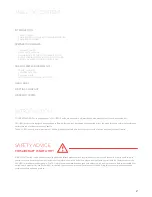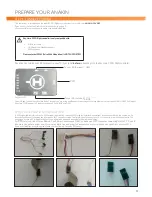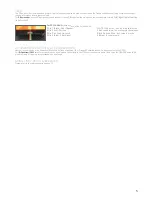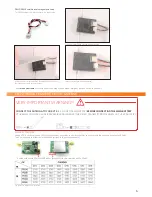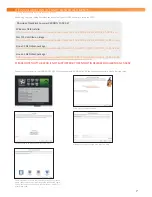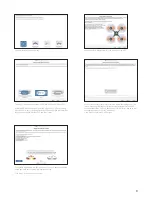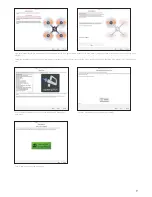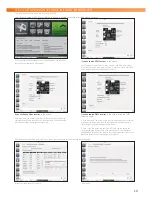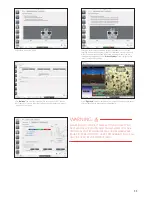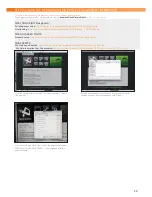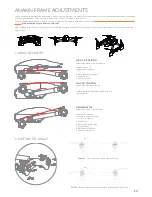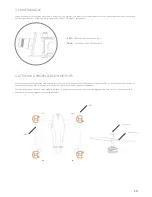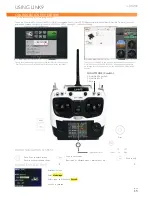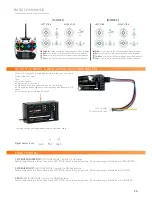
2
2
TABLE OF CONTENT
INTRODUCTION
1. SAFETY ADVICE
2. GENERAL INSTRUCTIONS AND GUIDELINES FOR USE
3. REQUIRED EQUIPMENT
PREPARE YOUR ANAKIN
1: CONNECT YOUR RX
2: INSTALL VTX ANTENNA
3: CALLIBRATION OF FLIGHT CONTROLLER & ESC’S
4: SETUP ANAKIN SETTINGS IN FLIGHT CONTROLLER
5: LOAD A SKY-HERO ANAKIN PID PROFILE FILE
ANAKIN FRAME ADJUSTEMENTS
1. ARMS’ GEOMETRY
2. MOTORS TILT ANGLE
3. CAMERA ANGLE
4. ATTACHING PROPELLERS ON MOTORS
USING LINK9
STARTING SEQUENCE
WARRANTY TERMS
1
INTRODUCTION
CONGRATULATIONS on your purchase of a SKY-HERO Anakin, we hope that it will provide you with many years of fun and entertainment.
SKY-HERO products are designed and developed in Belgium (Europe), but distributed and supported across the globe through a network of dealers and
outlets that can provide assistance and advice.
The SKY-HERO ethos is simple; provide cool, flexible, high quality aircraft, and back all products with a fair and reasonable support service.
SAFETY ADVICE
THIS AIRCRAFT IS NOT A TOY!
All SKY-HERO aircraft can be considered as a sophisticated leisure products, which require handling with care and caution in order to avoid injury to
yourself or others. Ensure that you fully review all of the information in this instruction manual and familiarise yourself with the characteristics of this
SKY-HERO aircraft before attempting to fly it.This instruction manual has been designed with safety in mind and is provided to help you assemble your
aircraft and to prepare it for use. Assembly of this aircraft requires basic mechanical and electrical skills and flying this type of aircraft requires basic
coordination skills and some practice.
GENERAL INSTRUCTIONS AND GUIDELINES FOR USE
The aircraft should not be flown by children and definitely not anyone under the age of 14
Failure to follow and comply with the safety advice and recommendations in this manual, can result in serious injury to you, others or property.
You should always check the local laws and regulations of the country where you will operate the aircraft, to ensure you are in com- pliance with them.
In particular you should avoid any sensitive areas such as Military establishments, Airports, Power stations and populated areas.
Always keep an adequate safe distance around the aircraft, ensuring that you avoid proximity to buildings, people and anything which is outside of your
control.
The aircraft is controlled by radio signal which can be subject to interference outside of your control, a loss of radio contact with the aircraft puts it out
of your control and could cause unpredictable results.
Never fly the aircraft in confined or built up areas, where you might lose visibility of the aircraft.
Never fly the aircraft in bad weather or strong winds, doing so could cause you to lose control with unpredictable results.
Never approach the aircraft until the propellers have stopped turning and never try to touch it whilst it is in flight.
Keep your batteries away from children, young children could attempt to put them in their mouth with dangerous consequences.
Do not expose the aircraft to water, moisture or liquids.
Do not attempt to fly the aircraft when battery power is low (including transmitter battery).
Before each flight, make sure that all propellers are securely attached, that there is no damage to the aircraft or its electronics and wiring.
Always disconnect the battery power to the aircraft before turning off the transmitter and always turn the transmitter on (checking the position of all
controls) before connecting the battery
Always following the instructions provided with your Flight Controller and any accessory equipment such as transmitter, battery chargers etc.
REQUIRED EQUIPMENT
At least one Lipo 3S 1300 mAh or greater is recommended.
Link9 of other compatible radios (See page 3)
Basic toolset
2


